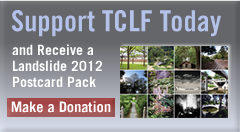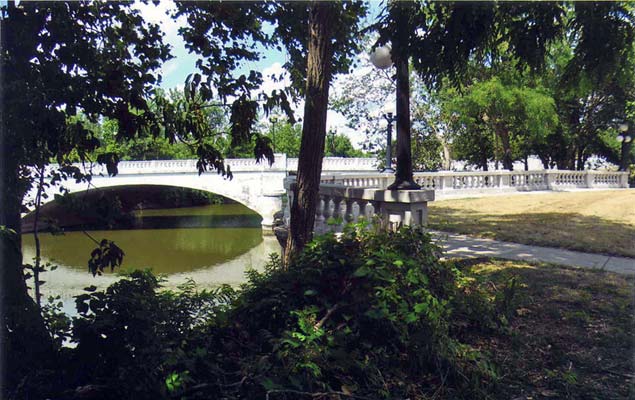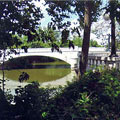
Thieme Drive
Fort Wayne, IN
It is now thoroughly recognized that no community is just to itself if it neglects to make the most of its physical beauties. Further than this no community can successfully compete with others of its class without amply providing open spaces for the enjoyment of outdoor recreation. — George Kessler, 1911 Report to the Board of Park Commissioners, Fort Wayne, Indiana
History
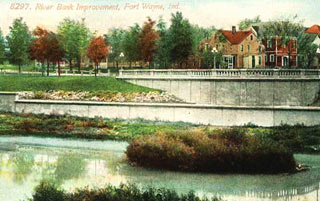
Photos courtesy Charlotte A. Weybright
In 1911 landscape architect George Kessler began work on a park and boulevard plan for the city of Fort Wayne Indiana. Kessler’s 1912 Park and Boulevard System took advantage of the city’s unique location at the confluence of three rivers, creating a series of riverside parks and drives. Incorporated into the plan were Thieme Drive and Thieme Drive Park, the first of Kessler’s commissions in Fort Wayne. Nestled along the curving bank of the St. Mary’s River, the Park and Boulevard were listed in the National Register of Historic Places in 1984 as part of the West Central Historic District, a community of architecturally significant homes, which was initially developed in the 1830s.
The Park and Boulevard were created as a result of the efforts of Theodore F. Thieme, a first-generation American born to German immigrant parents. In 1891, Thieme opened his Wayne Knitting Mills in downtown Fort Wayne and its knitted hosiery soon gained nationwide attention. Thieme was actively involved in Fort Wayne society – he was an early proponent of the City Beautiful Movement and beautification of Fort Wayne Rivers, participated in local clubs and organizations, was a published author, and a patron of the arts.
Thieme lived just steps away from the St. Marys River. As he walked from his home each day to his company, he passed by an unsightly plot of land at the corner of Main and Rockhill Streets. The former trucking company dumping ground lay on a small, scarred outcropping overlooking the river. Thieme began to create a plan to turn the land into a park where citizens could stroll, relax, and gaze at the river from the overlook.

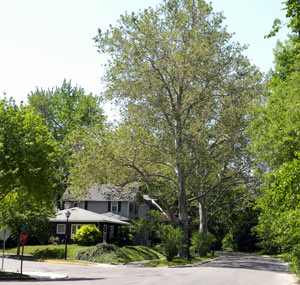
(top) Photo © Michael Carroll Mettler; (bottom) Photo courtesy
Charlotte A. Weybright.
In 1910 Thieme contacted Kessler to prepare a design for Thieme Drive Park. At the time Kessler was already a widely successful landscape architect, whose prolific body of work included Hyde Park, Kansas; the Kansas City, Kansas, Indianapolis, Indiana, Memphis, Tennessee, and Syracuse, New York, Park and Boulevard Systems; Vanderbilt University, Nashville, Tennessee and Fairlawn Cemetery, Oklahoma City, Oklahoma. As a part of his park and boulevard designs, Kessler had created numerous parks, including; Garfield Park, in Indianapolis, Overton and Riverside Parks in Memphis, and Hyde Park in Kansas City. The City eagerly approved Kessler’s Beaux-Arts plan for the Park, and accepted Thieme’s generous offer to fund its construction, completed in 1911.
The Park stood in stark contrast to the marshy, overgrown riverbank to its southwest. As a remedy, Kessler proposed the creation of Thieme Drive, a riverfront boulevard he incorporated into his Park and Boulevard system for Fort Wayne. The first of its kind in the City, the Drive connected Main Street and Thieme Park with West Washington Boulevard, several blocks to the southwest. Creation of the drive was a massive undertaking, which required the City to put in place 25 feet of fill along the length of the riverfront to raise the road to an acceptable height. Excavated dirt from other city projects and from additional land the City purchased was hauled to the Thieme Drive location.
The Drive was completed in 1912. The following year, sidewalks and curbs were installed and 37 Oriental Plane trees – cousins to the Sycamore – were planted along the east side of the boulevard. Today, Thieme Drive is the only remaining riverfront drive from Kessler’s Park and Boulevard Plan for Fort Wayne.
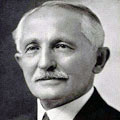
Patron
Theodore F. Thieme
Threat
Following a devastating 100-year flood the Army Corps of Engineers in 1982 produced a series of flood management plans for Fort Wayne, settling on a system of flood walls, levees, and berms to redirect water in the event of future flooding. The final phase of the project; the construction of a wall and levee system directly across from Thieme Drive was completed in 2001. The system closed off the adjacent Nebraska neighborhood from flooding and provided an overflow to the St. Marys River.
The Army Corps of Engineers was enlisted by the City again in 2003, after another 100-year flood. The Corps suggested the construction of a 10-foot high, 1100-foot long concrete wall along Thieme Drive. This plan, which would have destroyed the designed landscape along the boulevard, was abandoned after vocal opposition was voiced by members of the West Central Neighborhood. A viable alternative that proposes alternate flood control measures and the beautification of Thieme Drive was developed through a series of discussions, charrettes, and negotiations between residents and the City. Unfortunately, with no funding to follow through on the plan, the City has continued to construct additional walls, levees, and berms. Since 2003 Thieme Drive has flooded seven times in nine years.
In addition to flooding, a secondary threat to the drive is the City’s lack of regular maintenance of the riverbank area. The river’s edge has been allowed to deteriorate into a mass of tangled brush, weeds, and unwanted scrub trees. Without flood remediation measures, and regular maintenance, the city risks losing the only river boulevard in its historic boulevard system and Thieme Park will have lost its 100-year-old companion.
How You Can Help
The public can help advocate for the Drive’s preservation by writing letters to newspapers, contacting state legislators, and participating in public hearings.
Individuals interested in learning more about Thieme Drive, or volunteering in maintenance efforts can contact the West Central Neighborhood Association.
Learn More
Thieme Drive
Fort Wayne, IN
